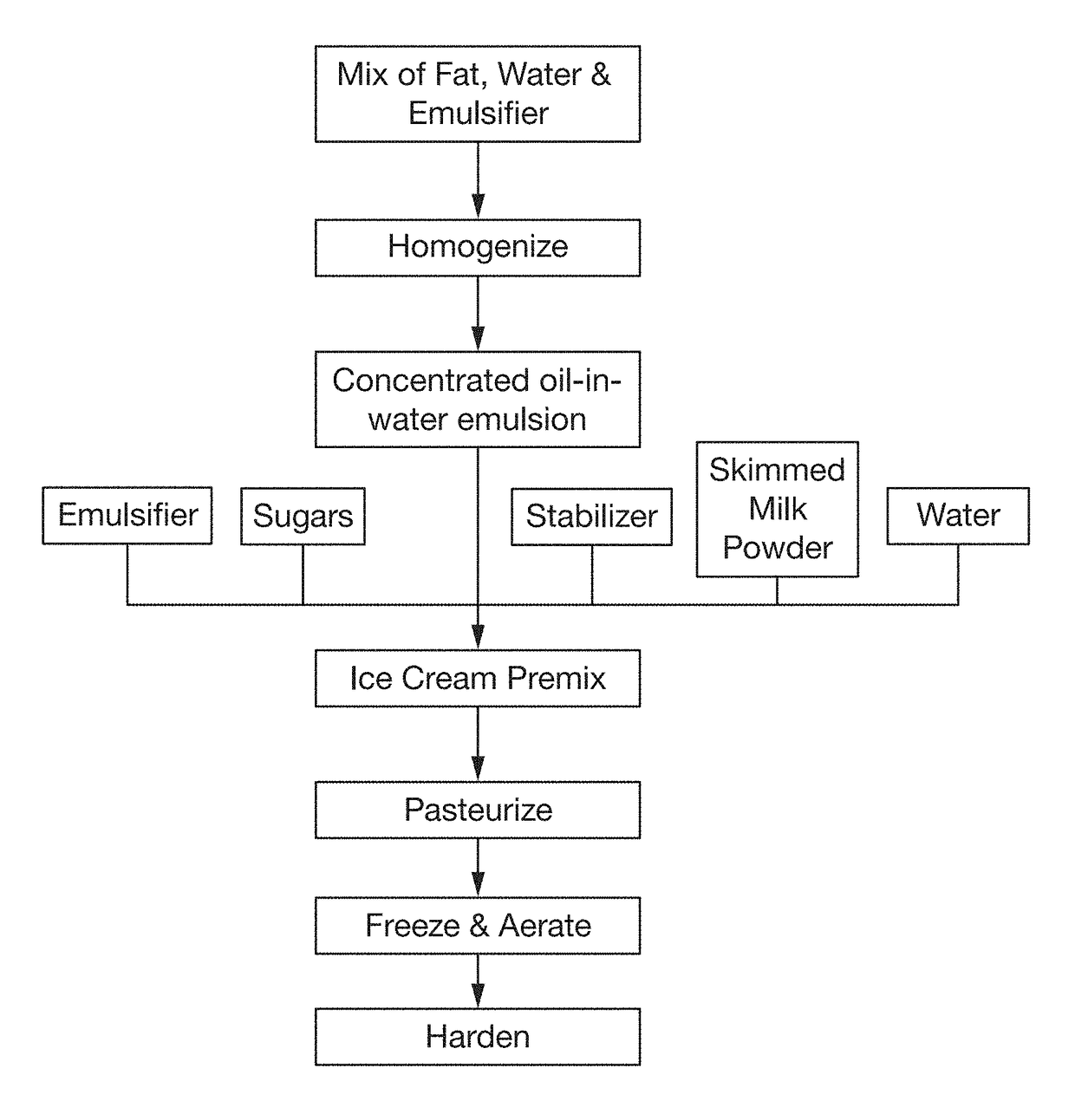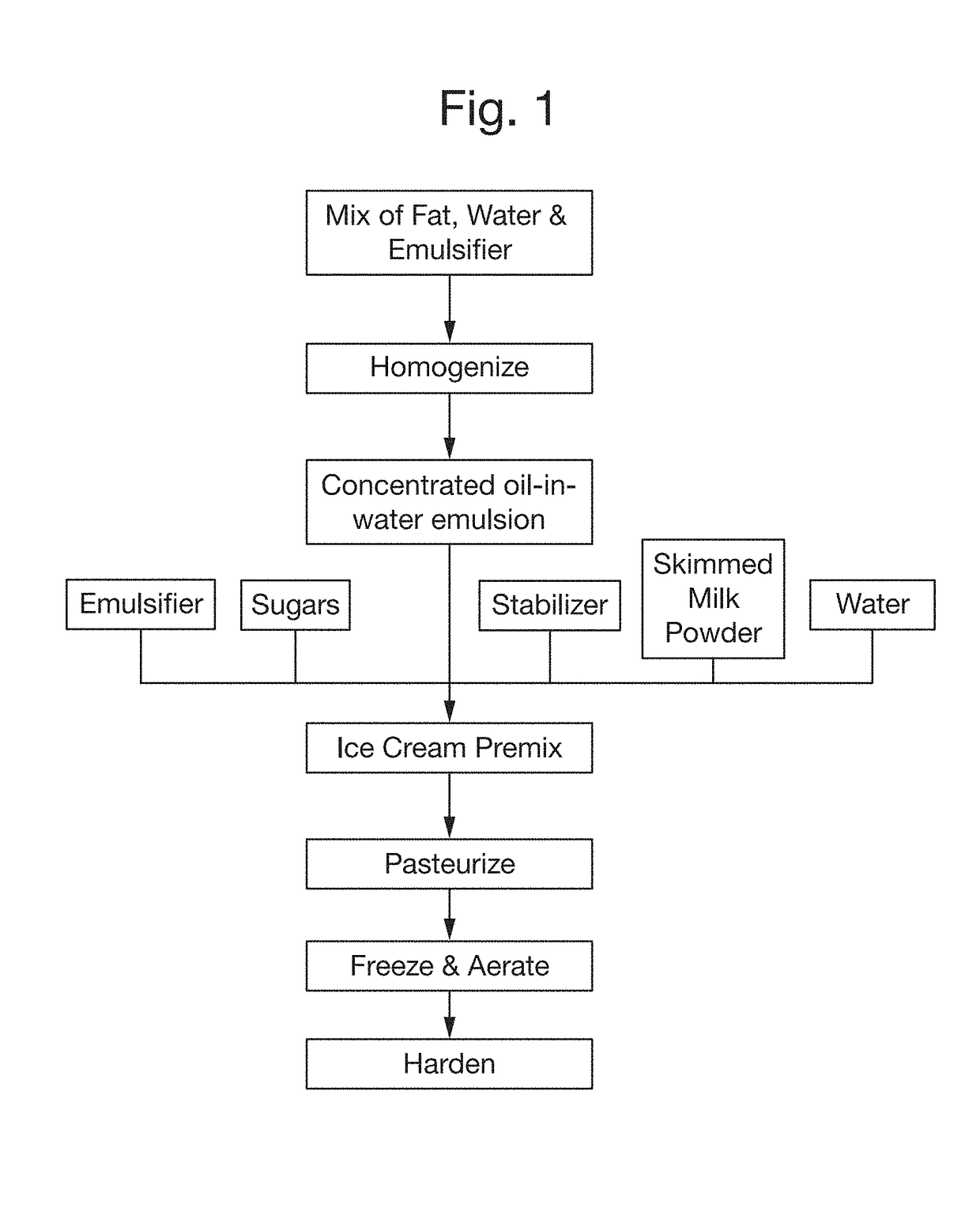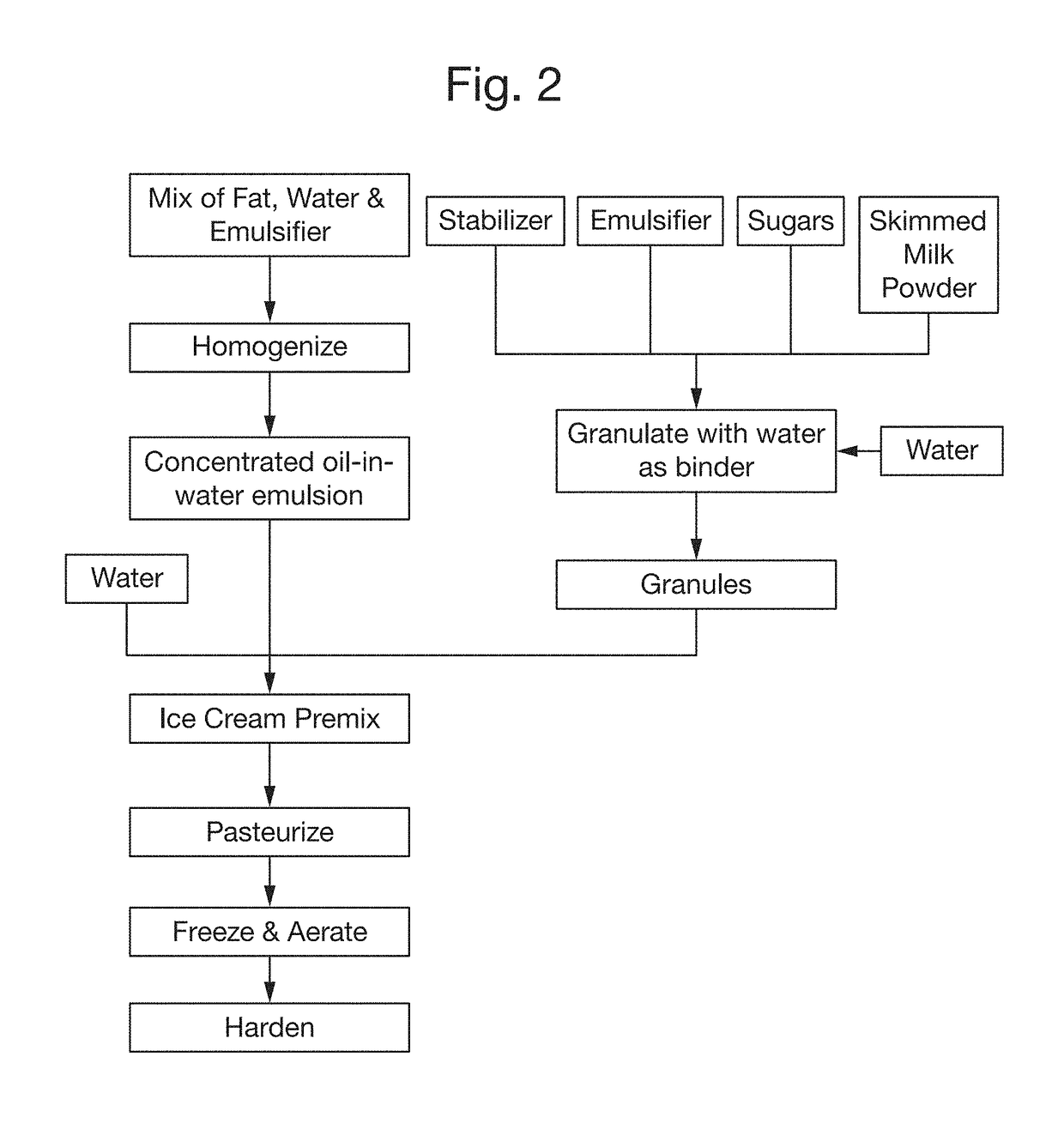Frozen confection manufacture
- Summary
- Abstract
- Description
- Claims
- Application Information
AI Technical Summary
Benefits of technology
Problems solved by technology
Method used
Image
Examples
example 1
[0085]This example demonstrates production of ice cream using a process according to the embodiment shown in FIG. 1.
[0086]An oil-in-water emulsion containing 55 wt % coconut fat (Cargill), 3.85 wt % sodium caseinate (Frieslandcampina) and 41.15 wt % water was prepared as follows: Hot water at 82° C. was added to a mix vessel, followed by the sodium caseinate. The contents of the vessel were vigorously mixed for 5-7 minutes to ensure complete dispersion / dissolution of sodium caseinate. The pre-melted fat / oil was then metered into the vessel and the mixture was agitated at high speeds for further 10 minutes. The mixing operation typically took around 20 minutes. The resulting coarse emulsion was then pumped through a two stage homogenizer (Tetra Alex S05 A supplied by Tetra Pak) at a pressures of 175 bar and 30 bar in the 1st and 2nd stages respectively. The homogenized emulsion was then stored in the storage vessel before metering into the main mixing vessel.
[0087]The ingredients sho...
example 2
[0091]This example demonstrates formation of a concentrate in the form of granules wherein an emulsion was used as binder.
[0092]The emulsion for granulation was prepared by the method described above in Example 1 except that the composition of the emulsion was 60 wt % coconut fat, 4.2 wt % sodium caseinate and 35.8 wt % water. This emulsion was used as a binder to produce granules. The composition of the powder blend that was granulated is the same as shown in Table 1 above.
[0093]The granulation was performed using an 80 L ploughshare mixer without chopper / refiner. 50 kg of powder the blend was first mixed for 3 minutes in the mixer to obtain a uniform composition. The binder (emulsion) was then added at the rate of 0.82 kg / min. The binder addition was stopped at regular intervals while continuing mixing to promote homogenous distribution of emulsion / binder in the powder. In this particular example the granulation process was stopped after the addition of 11 kg of emulsion. The tota...
example 3
[0106]This example demonstrates formation of a concentrated oil-in water emulsion suitable for use in the invention wherein the emulsion is formed with a rotor-stator homogenizer.
[0107]In this example whey protein concentrate (Textrion Progel™ 800 ex DMV) was used as surface active protein to emulsify the fat. The composition of the high fat emulsion is shown in Table 3.
TABLE 3Ingredient% by weight of emulsionSunflower oil52Whey protein concentrate9Sucrose19Water20
[0108]The emulsion was made using an IKA LaborPilot™ 2000 / 4 colloid mill (IKA-Werke GmbH & co. KG, Staufen, Germany). The mill is rpm controlled and provides integrated measurement of the exit temperature, pressure drop and powder input. The emulsification was performed with a smooth milling head at a minimal gap of 0.1 mm and at 10,000 rpm. The mill head is jacketed for active cooling with cold water.
[0109]A pre-emulsion was prepared in 2 kg batches in a 5 litre vessel equipped with six-blade impeller with blade angle of ...
PUM
 Login to View More
Login to View More Abstract
Description
Claims
Application Information
 Login to View More
Login to View More - R&D
- Intellectual Property
- Life Sciences
- Materials
- Tech Scout
- Unparalleled Data Quality
- Higher Quality Content
- 60% Fewer Hallucinations
Browse by: Latest US Patents, China's latest patents, Technical Efficacy Thesaurus, Application Domain, Technology Topic, Popular Technical Reports.
© 2025 PatSnap. All rights reserved.Legal|Privacy policy|Modern Slavery Act Transparency Statement|Sitemap|About US| Contact US: help@patsnap.com



